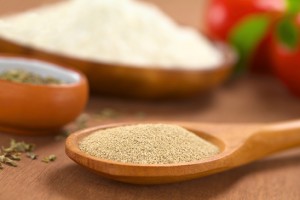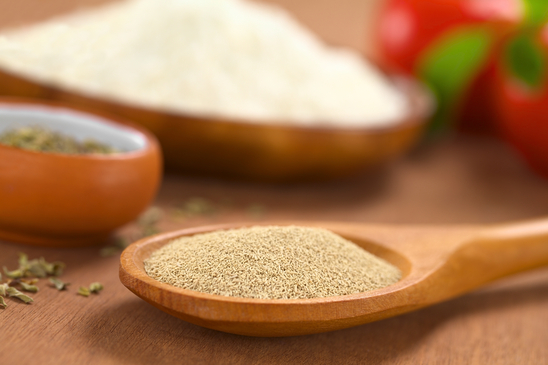 Yeast is a microorganism (or many) with rapid replication, which when added to the flour- and under ideal conditions, do raise. Once it gets moisture additions and under the right temperature, the microorganism will be rapidly reproduced, creating large amounts of gaseous carbon dioxide, which in turn will raise the dough and generate the texture shown in bread, i.e. holes air, etc.
Yeast is a microorganism (or many) with rapid replication, which when added to the flour- and under ideal conditions, do raise. Once it gets moisture additions and under the right temperature, the microorganism will be rapidly reproduced, creating large amounts of gaseous carbon dioxide, which in turn will raise the dough and generate the texture shown in bread, i.e. holes air, etc.
Until a few decades ago, the industrial yeast was something unknown to bakers and housewives, not only in Greece, but throughout the world. The production of bread was based on corporatist or homemade recipes for the production of wild yeast, which in our country is known as sourdough.
QUICK YEAST: The best that you can use in any bread recipe. Dosage: 3 teaspoons per 1.5 kg of flour
FRESH YEAST: You can find it for sale in small cubes of 27 grams each. Then you can refrigerate it for 2 weeks. To enable it, break it into water at 35 ° C and add a little sugar. You’ll have to wait 15-20 minutes until you are ready to add to the flour. Dosage: 50 g. fresh yeast for every 1.5 kg of flour.
INSTANT YEAST: Dried version of fresh yeast, usually sold in small sachets. The dosage is 25 g. instant yeast for every 1.5 kg of flour.
BAKING POWDER: The chemical combination of acidic and alkaline elements in baking powder produces with the help of water, gases, which help to raise the dough in the same way other yeasts do. Not recommended in bread.
There are many more raising agents for the flour, which are used in particular in pastry or in the industrial production of bread, like baking soda bicarbonate (sodium bicarbonate – E300), tartaric acid (E334) and ammonia bicarbonate (E503).

